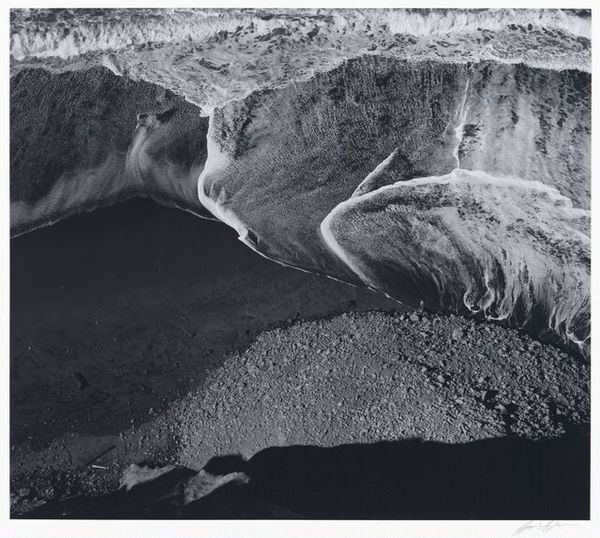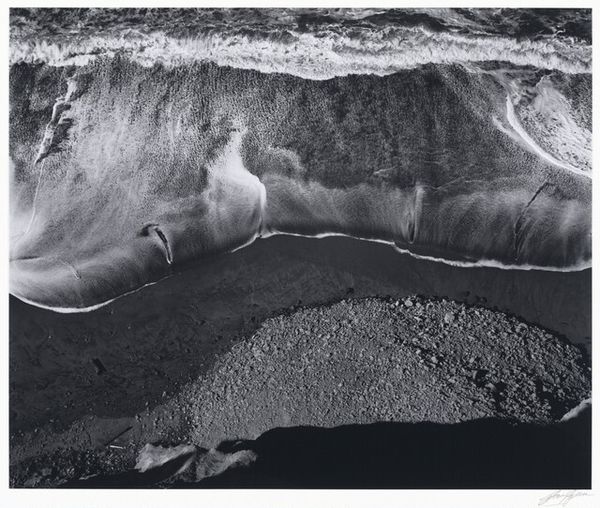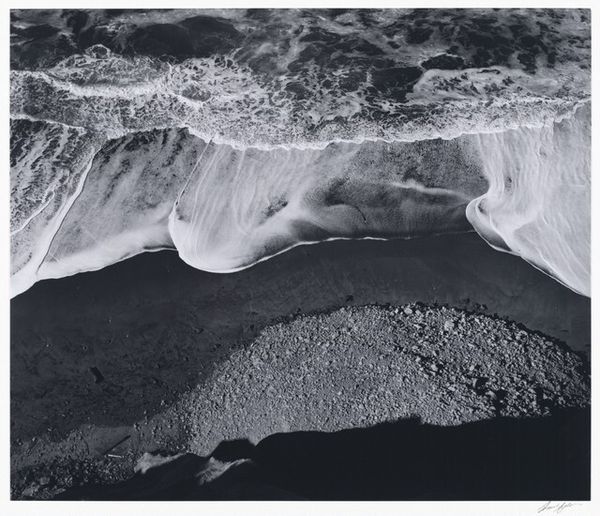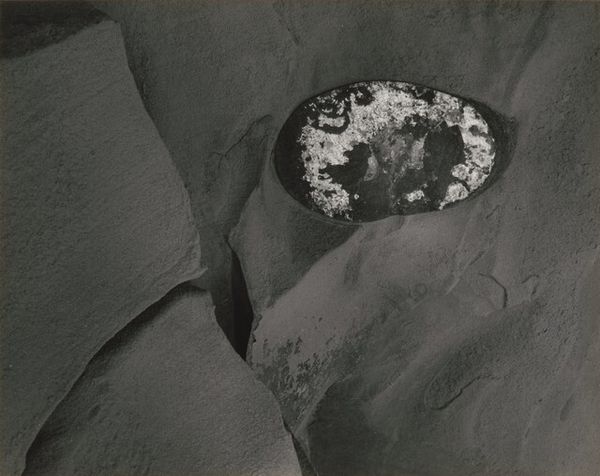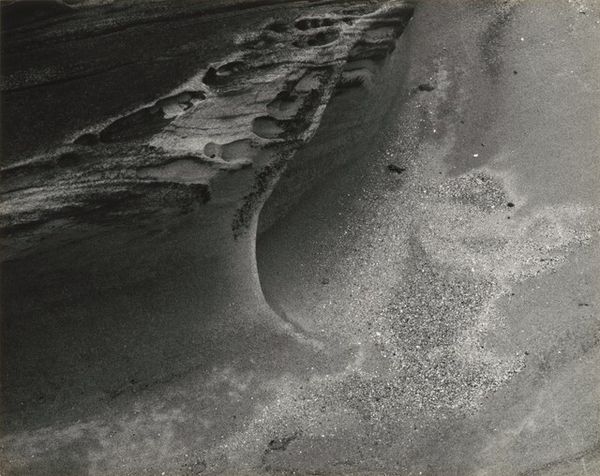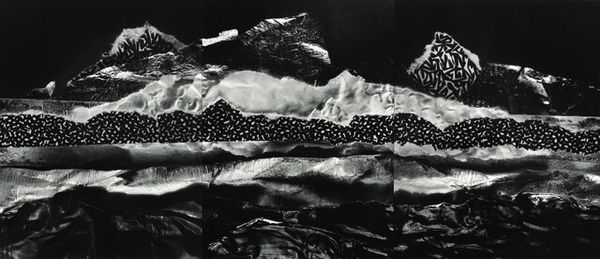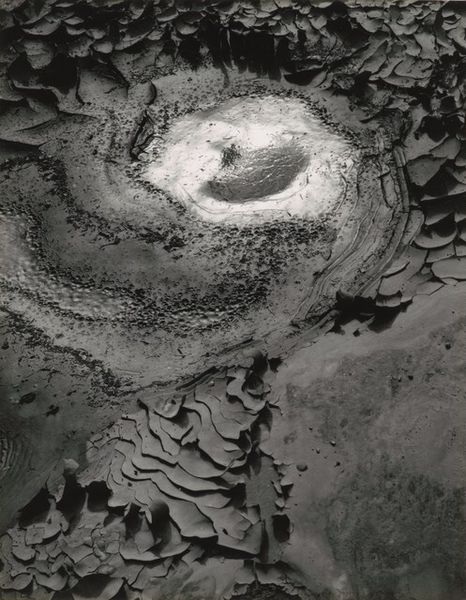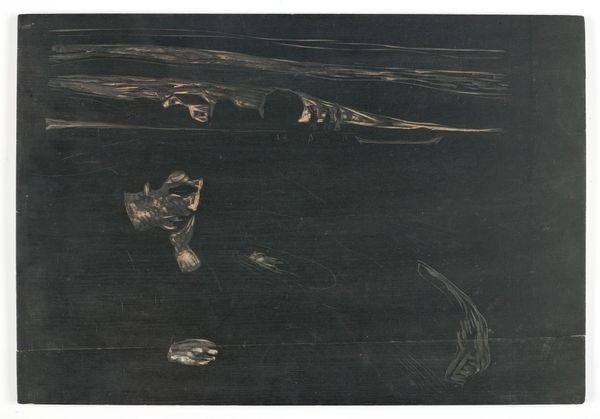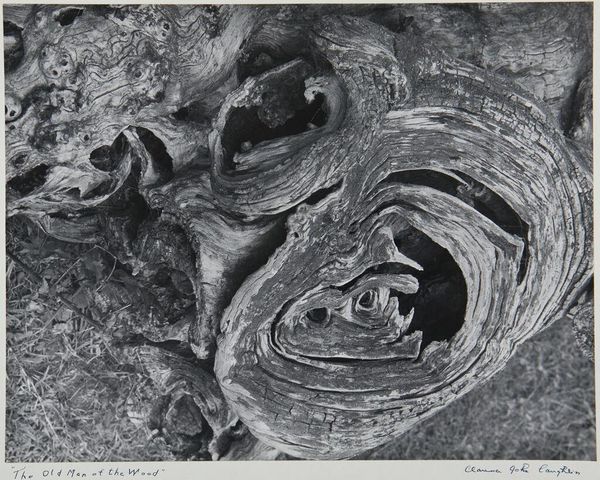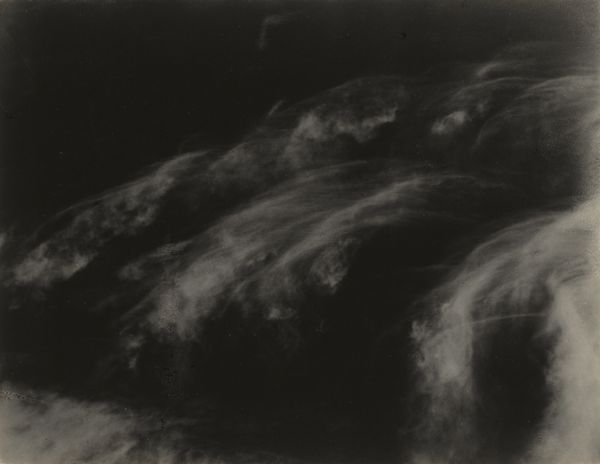
Surf Sequence 2, San Mateo County Coast, California Possibly 1940 - 1982
0:00
0:00
Dimensions: overall: 33.3 x 27.4 cm (13 1/8 x 10 13/16 in.)
Copyright: National Gallery of Art: CC0 1.0
Editor: Here we have Ansel Adams’s "Surf Sequence 2, San Mateo County Coast, California," likely captured between 1940 and 1982, a gelatin-silver print. I’m immediately drawn to the contrast – that dynamic interplay between the churning water and the stark, solid land. What speaks to you most profoundly about this work? Curator: What I find striking is Adams’s engagement with the rhetoric of preservation at a time of immense environmental change. Adams was deeply involved with the Sierra Club; how might this image be viewed as an extension of his environmental activism, especially considering the historical context of increased industrialization and development along the California coast during the mid-20th century? Editor: That’s interesting. So, it’s not just a pretty picture of the coast, but a statement? How would that have resonated with viewers at the time? Curator: Precisely. Think about the rise of environmental consciousness in post-war America. Photography, particularly landscape photography, played a significant role in shaping public perception and advocacy. Images like these, widely circulated through publications and exhibitions, visually reinforced the urgency of conservation. Did it effectively galvanize political action, or was it simply preaching to the choir? Editor: A complex legacy then, raising awareness, but perhaps not always translating directly into policy change? I'm starting to see the photograph not just as art, but as a piece of social history. Curator: Exactly. It compels us to think about the role of art, particularly photography, in shaping environmental discourse and influencing public policy. A gorgeous picture, yes, but also a piece of persuasive rhetoric. Editor: Fascinating. It completely shifted my understanding. Thanks for the insight! Curator: My pleasure. These historical contexts always deepen our understanding.
Comments
No comments
Be the first to comment and join the conversation on the ultimate creative platform.
